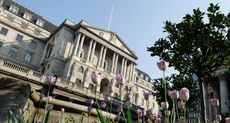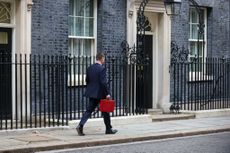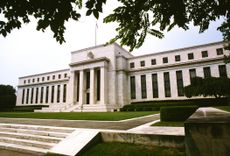The end of the bond bull market and the return of inflation
Central bank stimulus, surging post-lockdown demand and the end of the 40-year bond bull market. It all points to inflation, says John Stepek. Here’s why, and what it means for you and your portfolio.


Good morning. I’ve just been reading the transcript of a really interesting episode of Barry Ritholtz’s Bloomberg Masters in Business podcast. I don’t often plug other people’s podcasts here but I’d suggest this one is worth listening to.
It’s an interview with Jeremy Siegel. Siegel is one of the best-known faces in academic finance, up there with Robert Shiller. He’s probably best known for his book, Stocks for the Long Run. As the title suggests, it’s all about why stocks deliver the best returns over the long run, which is one reason Siegel tends to be viewed as a bit of a permabull.
But it’s not actually Siegel’s views on stocks that I’m particularly interested in here. It’s his take on what’s going to happen as a result of all this coronavirus stimulus – and what it means for all of our portfolios.
Subscribe to MoneyWeek
Subscribe to MoneyWeek today and get your first six magazine issues absolutely FREE

Sign up to Money Morning
Don't miss the latest investment and personal finances news, market analysis, plus money-saving tips with our free twice-daily newsletter
Don't miss the latest investment and personal finances news, market analysis, plus money-saving tips with our free twice-daily newsletter
Why this time is different from 2008
I’ve been talking for a while about how the central bank and government stimulus we’ve seen in the wake of the coronavirus lockdown is likely to spark inflation, which will offset any disinflationary consequences of the virus.
So I found it very interesting that Jeremy Siegel – a big proponent of equities and one of the most respected voices on the “bull” side of the market – also reckons that this is what’s going to happen. In fact, as a result of this belief, he’s actually adding gold to his model portfolio for the first time, as inflation protection.
So what’s the story? Why is today different to 2008?
As Siegel points out to Ritholtz, in effect, after 2008, all of the money that was printed back then by the Federal Reserve and other central banks went into propping up the banking system. Banks had over-reached themselves. Quantitative easing (QE) was about returning the financial system to a less precarious state.
So you had a situation where the system was “deleveraging”. The money wasn’t being pumped into the system so that it could flow into the “real” economy. It was being pumped into the system to pull it back from the brink.
If you’re in the market for really stretched analogies (this one’s mine, not Siegel’s, I hasten to add) you could think of post-2008 QE as coolant flooding an overheating reactor to prevent it from melting down.
So we’re clear on why QE didn’t result in rampant consumer price inflation (although this doesn’t preclude its effect on asset prices, which is a whole other conversation which we can have another day). What’s changed today?
“The big difference this time”, says Siegel, is that “not only has there been a huge increase in the balance sheet... of the Fed but to a much greater extent, this money is going right into chequing accounts, right into transaction accounts, right into payroll accounts, right into the bank accounts of individuals and businesses in a way I’ve never seen before.”
In other words, in 2008, the monetary flood just poured into the depleted resources of the financial system itself. But today, it’s not really even targeted at the financial system – the goal is to keep people and businesses afloat. Even if that’s only temporary (some temporary layoffs will turn into redundancies, some businesses will still go bust), it’s still money entering the system that wouldn’t otherwise have existed.
That’s why it’s different this time. And that’s why it’s inflationary this time.
The biggest investment shift of our lifetimes
What’s the result? As Siegel points out, once the economy opens up, central banks are not going to suck out this extra money. Nor will the government put up taxes to drain it. As a result, “I think we’re going to have a huge spending boom next year and I think for the first time… in over two decades, we’re going to see inflation."
It also means, by the way, that Siegel reckons the 40-year bull market in bonds finally ended in March. We’ll look at that in more detail another day, but that’s hugely important. That means the biggest, most important trend of your investment lifetime (certainly for readers under the age of 80) ended this year.
Siegel is just the latest in a line of smart people I pay attention to who are arguing that we are now heading for inflation. Normally when there seems to be a consensus forming around an outcome, I get concerned. However, on this occasion, the people who are arguing that inflation will arise this time – people like Russell Napier, Albert Edwards, James Ferguson – are exactly the people who I should have been listening to when they argued, correctly, that inflation wouldn’t be a problem after 2008.
My colleague Merryn wrote more on this idea of a “V-shaped” recovery – driven by genuinely pent-up demand – still being on the cards. Have a read of it here. Judging by the reaction on Twitter and elsewhere, this is still a contentious view. I think she’s right. But either way, the timing is, to an extent, irrelevant.
The point is this: even if there is a second wave, there will be more stimulus. Opinion columnists love to rattle on about the psychology of all this (“will people be too scared to spend? Will we suddenly realise after weeks of lockdown that we hate consumerism and crowded beaches?”), usually to make some facile point based entirely on their own narrow range of tastes and values.
But financial psychology is driven by “real” economic conditions. People might be nervous about job security. But if money is in their bank accounts and money is still coming through the door on a regular basis, it will be spent.
Besides which, a genuine backlog of “need” rather than “want” has built up. We need new clothes. We need haircuts (I really, really, need a haircut). We need replacement items for the house.
So regardless of the exact timing – whether it’s V-shaped next week, or V-shaped six months from now – a surge in demand seems likely, and that is likely to be inflationary.
We’ve been writing about this regularly in MoneyWeek already this year, but we’ll be covering it a lot more, because this is probably the single most important change most of us have seen, and quite possibly will ever see, in our investing lifetimes. So if you’re not already a subscriber, get your first six issues free here now.
John is the executive editor of MoneyWeek and writes our daily investment email, Money Morning. John graduated from Strathclyde University with a degree in psychology in 1996 and has always been fascinated by the gap between the way the market works in theory and the way it works in practice, and by how our deep-rooted instincts work against our best interests as investors.
He started out in journalism by writing articles about the specific business challenges facing family firms. In 2003, he took a job on the finance desk of Teletext, where he spent two years covering the markets and breaking financial news. John joined MoneyWeek in 2005.
His work has been published in Families in Business, Shares magazine, Spear's Magazine, The Sunday Times, and The Spectator among others. He has also appeared as an expert commentator on BBC Radio 4's Today programme, BBC Radio Scotland, Newsnight, Daily Politics and Bloomberg. His first book, on contrarian investing, The Sceptical Investor, was released in March 2019. You can follow John on Twitter at @john_stepek.
-
 Smaller companies: starting to turn?
Smaller companies: starting to turn?The long-awaited turnaround in smaller companies is unlikely to happen just because shares are lowly-valued. However, an improving economic and interest rate backdrop could spark renewed interest in the sector. M&A activity is also providing support for the smaller companies sector
By MoneyWeek Published
-
 What are safe-haven assets and should you invest in them?
What are safe-haven assets and should you invest in them?Investors turn to safe-haven assets like gold and government bonds in periods of market turmoil. How do they work and should you invest in them?
By Katie Williams Published
-
 UK wages grow at a record pace
UK wages grow at a record paceThe latest UK wages data will add pressure on the BoE to push interest rates even higher.
By Nicole García Mérida Published
-
 Trapped in a time of zombie government
Trapped in a time of zombie governmentIt’s not just companies that are eking out an existence, says Max King. The state is in the twilight zone too.
By Max King Published
-
 America is in deep denial over debt
America is in deep denial over debtThe downgrade in America’s credit rating was much criticised by the US government, says Alex Rankine. But was it a long time coming?
By Alex Rankine Published
-
 UK economy avoids stagnation with surprise growth
UK economy avoids stagnation with surprise growthGross domestic product increased by 0.2% in the second quarter and by 0.5% in June
By Pedro Gonçalves Published
-
 Bank of England raises interest rates to 5.25%
Bank of England raises interest rates to 5.25%The Bank has hiked rates from 5% to 5.25%, marking the 14th increase in a row. We explain what it means for savers and homeowners - and whether more rate rises are on the horizon
By Ruth Emery Published
-
 UK wage growth hits a record high
UK wage growth hits a record highStubborn inflation fuels wage growth, hitting a 20-year record high. But unemployment jumps
By Vaishali Varu Published
-
 UK inflation remains at 8.7% ‒ what it means for your money
UK inflation remains at 8.7% ‒ what it means for your moneyInflation was unmoved at 8.7% in the 12 months to May. What does this ‘sticky’ rate of inflation mean for your money?
By John Fitzsimons Published
-
 VICE bankruptcy: how did it happen?
VICE bankruptcy: how did it happen?Was the VICE bankruptcy inevitable? We look into how the once multibillion-dollar came crashing down.
By Jane Lewis Published